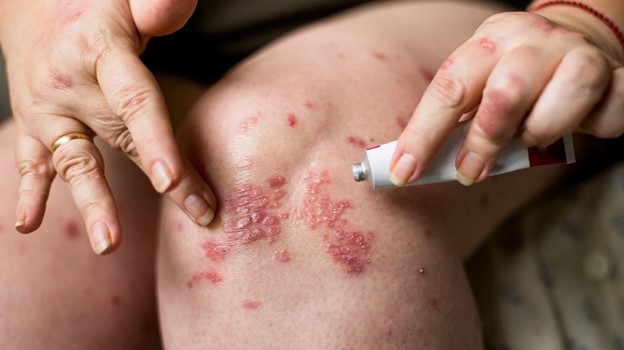A nurse is providing discharge instructions to a parent and their school-age child who has juvenile idiopathic arthritis.
Which of the following instructions should the nurse include?
Encourage the child to take a 45-minute nap daily.
Administer prednisone on an alternate-day schedule.
Allow the child to stay at home on days when their joints are painful.
Apply cool compresses for 20 minutes every hour.
The Correct Answer is B
Prednisone is a type of steroid medicine that helps decrease severe inflammation and is usually given for a short time while other medicines are started that can take longer to be effective.
Choice A is not an answer because there is no information available that suggests taking a 45-minute nap daily would be beneficial for a child with juvenile idiopathic arthritis.
Choice C is not an answer because it may not be necessary for the child to stay at home on days when their joints are painful.
Choice D is not an answer because applying cool compresses for 20 minutes every hour may not be the most effective way to manage pain and inflammation.
Nursing Test Bank
Naxlex Comprehensive Predictor Exams
Related Questions
Correct Answer is D
Explanation
Individuals with spina bifida who are paralyzed from the waist down may have difficulty emptying their bladder completely and may need to perform intermittent catheterization.
The frequency of catheterization can vary depending on the individual’s needs, but it is typically performed every 3-6 hours or 4-6 times per day.
Choice A, “I do wheelchair exercises while watching TV,” is a positive statement because exercise is important for overall health and well-being.
Choice B, “I carry a water bottle with me because I drink a lot of water,” is also a positive statement because staying hydrated is important for overall health.
Choice C, “I use a suppository every night to have a bowel movement,” is not necessarily an indication for further teaching because some individuals with spinal bifida may need to use bowel management techniques such as suppositories to help regulate bowel movements.
Correct Answer is D
Explanation
Treatment of eczema may start with regular moisturizing and other self-care habits.
If these don’t help, a healthcare provider might suggest medicated creams that control itching and help repair skin.
Choice A is not correct because woolen clothes can irritate the skin and worsen
eczema.
Choice B is not correct because fabric softeners can irritate the skin and worsen
eczema.
Choice C is not correct because bubble baths can dry out the skin and worsen eczema.

Whether you are a student looking to ace your exams or a practicing nurse seeking to enhance your expertise , our nursing education contents will empower you with the confidence and competence to make a difference in the lives of patients and become a respected leader in the healthcare field.
Visit Naxlex, invest in your future and unlock endless possibilities with our unparalleled nursing education contents today
Report Wrong Answer on the Current Question
Do you disagree with the answer? If yes, what is your expected answer? Explain.
Kindly be descriptive with the issue you are facing.
